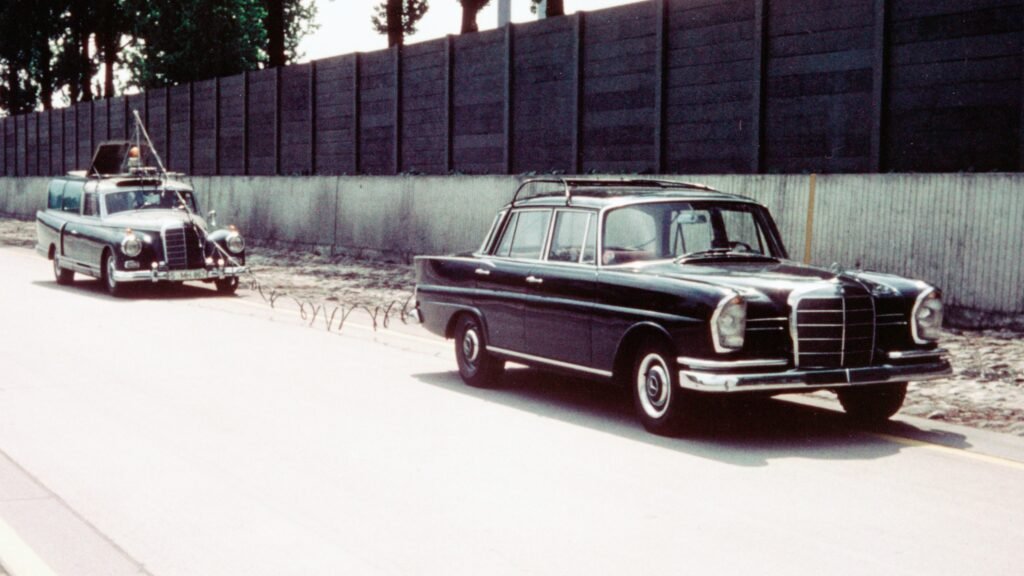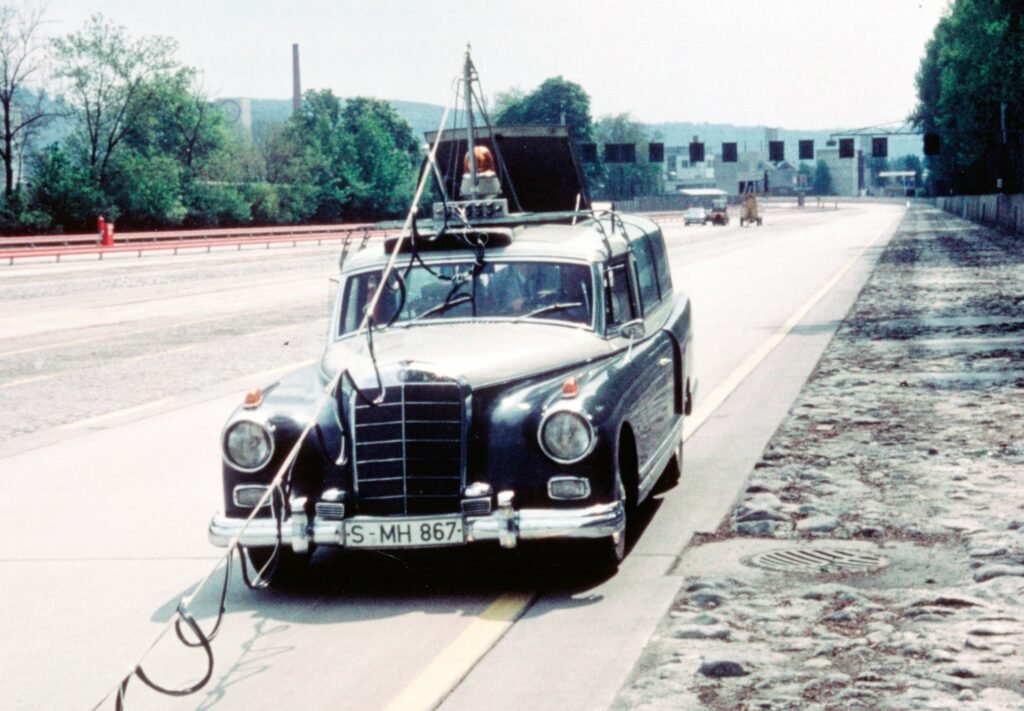Advanced technology has helped automotive manufacturers conduct tests on their vehicles, even before the test mule hits the road. But way before the rise of modern computers, the situation was bit different, manufacturers had to rely on large, heavy, and sensitive measuring instruments for collecting sensor data. The 1960 Mercedes-Benz 300 “Adenaur” (W189) was one such vehicle which Mercedes-Benz came up with to solve this issue.
Measuring car (Messwagen)

Mercedes-Benz split the sensor technology and the acquisition of measurement data between two vehicles – and so the measuring car was born. While the development engineers guided the prototype through the desired dynamic handling tests, the more quietly rolling laboratory followed at a distance and received the measurement data, e.g. from the shock absorbers, via the cable. Telemetry is the name of this sort of data transmission, subsequently accomplished via radio signals. In most cases, the sensor data was recorded in the measuring car on magnetic tape and evaluated later in peace and quiet.
Why Mercedes-Benz W189?
The heavily customised and equipped 300 was one-off model built by Mercedes-Benz in 1960 as a measuring car for the development engineers in the testing department. The elegant flagship Mercedes-Benz saloon in the W 189 series was chosen as its basis because of the need for a fast and large vehicle. As the measuring car not only had to follow other vehicles effortlessly, it also had to be able to transport the voluminous measuring equipment.

One half of the one-off Mercedes Benz 300 looks like a normal “Adenauer” (as this representative vehicle is called due to the first German Chancellor Konrad Adenauer’s preference for the model). The difference begins behind the B-pillar from that point back stretches an elegant, elongated rear end generously glazed with panoramic windows, reminiscent of an estate car.
Rolling Laboratory
For many years, the converted Mercedes-Benz 300 was used successfully as a rolling measurement laboratory. For this purpose, it was connected to another vehicle via a cable up to 30 metres long – a kind of early “local area network” (LAN). The line transmitted sensor data to sensitive measuring devices in the rear.


A look inside the measuring car shows that the engineers did not enjoy top comfort. Headroom is limited, and the two seats have simple garden chair backs in woven rattan. Plus the glazing probably not only let a lot of light into the interior on sunny days, but also created something of a greenhouse climate. At least the body has ventilation openings on the sides.
Special equipments
The prototype can transmit fourteen measured values simultaneously to the mobile laboratory, which was not a bad value at the time. Every bit of space in the rear of the 300 is utilised for the sensitive devices, always specifically selected for the respective measuring programme. To supply these with electricity, there is also a generator on board. And, of course, there is also a radio link between the two vehicles.

160 HP powertrain
The Mercedes-Benz 300 is powered by the 160 hp, 3-litre injection engine from the later version of the W 189 (1957 to 1962). A contemporary description states 120 km/h as the maximum speed. A normal “Adenauer” with automatic transmission could reach a top speed of 165 km/h. The measuring car was used until the 1970s, mainly on the test track in Untertürkheim. The Mercedes-Benz 300 with registration number S-MH 867 is now residing in the Legend Room 5 of the Mercedes-Benz Museum.


